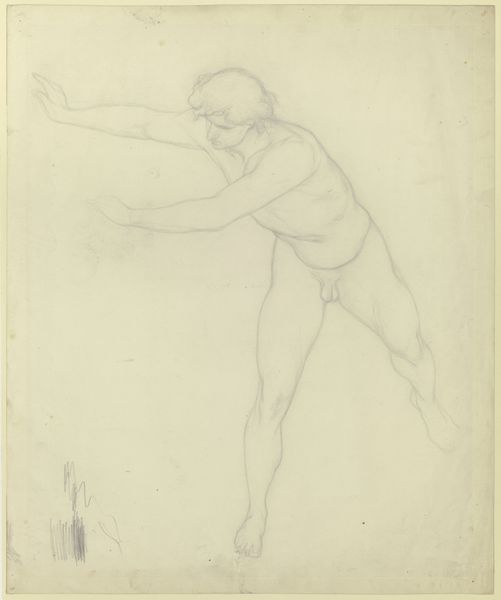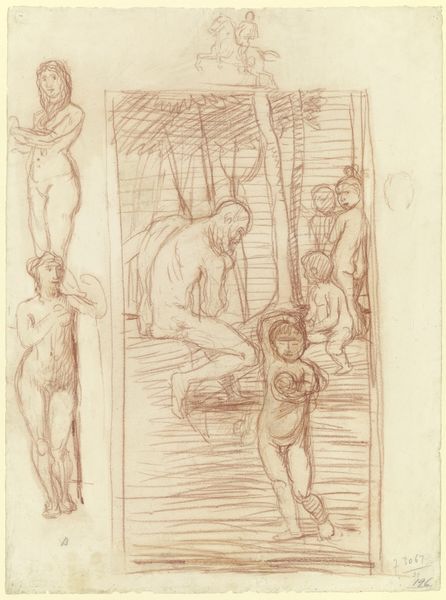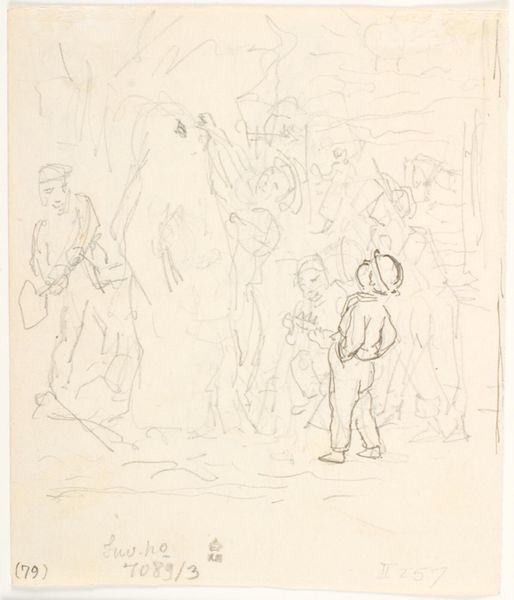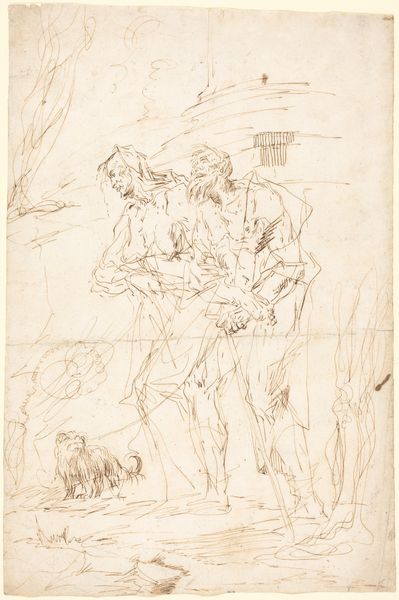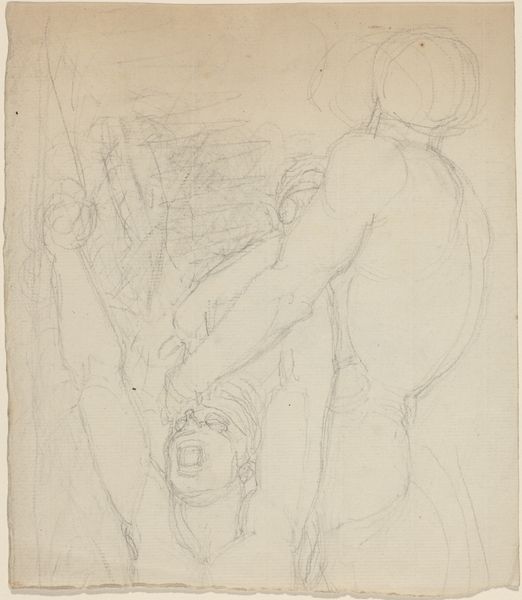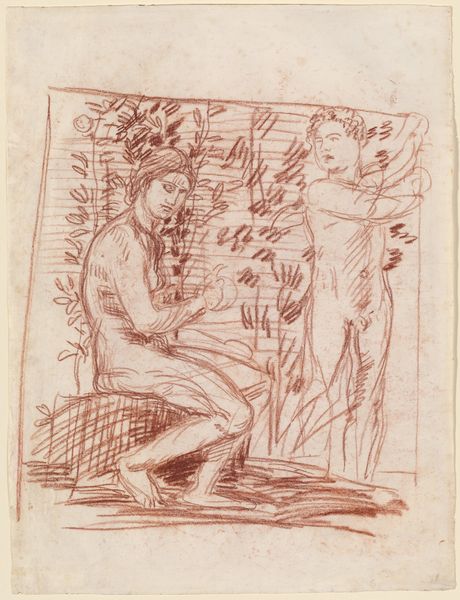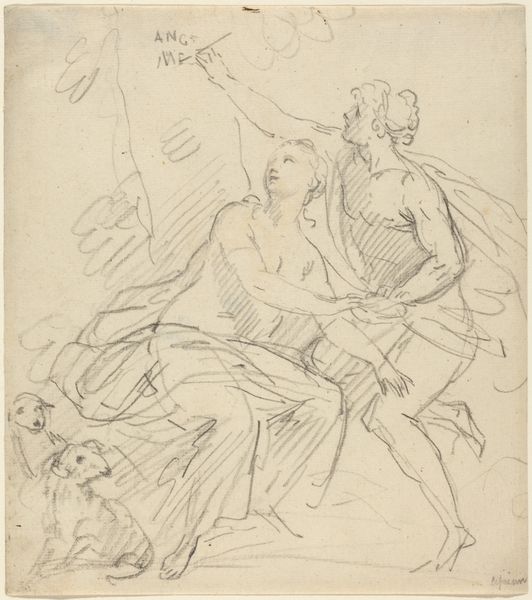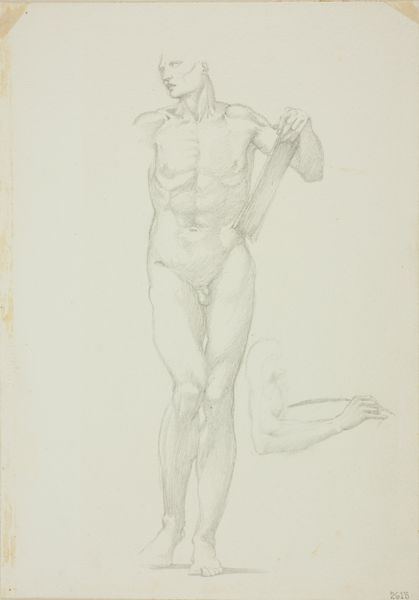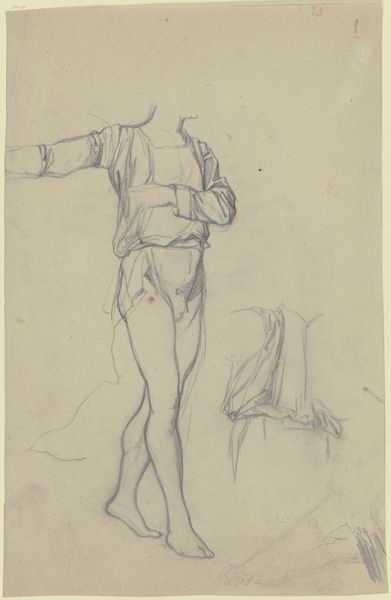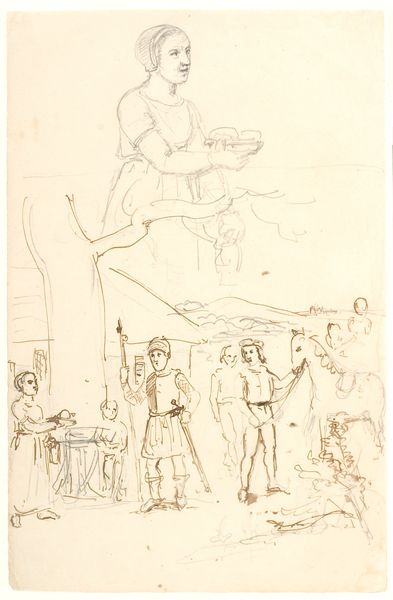
Studies of Men Turning a Cider Press 1863 - 1864
0:00
0:00
drawing, graphite
#
drawing
#
landscape
#
figuration
#
graphite
#
academic-art
Dimensions: 11 5/16 x 9 1/8 in. (28.73 x 23.18 cm) (image)
Copyright: Public Domain
Editor: This is Pierre Puvis de Chavannes's "Studies of Men Turning a Cider Press," made around 1863 or 1864. It's a graphite drawing, and it feels… surprisingly classical for its time. What do you see in this piece, particularly in relation to its historical moment? Curator: This work really encapsulates the tension between tradition and modernity that defined much of 19th-century art. While de Chavannes evokes a timeless, almost idealized scene of labor, rooted in classical ideals of the male nude, he is, perhaps subtly, engaging with contemporary debates about the changing nature of work and the rise of industrialization. The drawing could be interpreted as a nostalgic look back at pre-industrial modes of production. How does this idealized view of labor connect or clash with the realities of work experienced by most people during that time? Editor: So it's a political statement, maybe, even in its seeming classicism? A yearning for simpler times, perhaps? Curator: It certainly invites that interpretation. Think about the context: The mid-19th century was a period of immense social upheaval, fueled by industrial growth and the displacement of agricultural labor. De Chavannes presents us with a communal, arguably romanticized, vision of rural labor. He is conspicuously choosing to highlight traditional forms of working at a time when those forms are quickly disappearing, and new, more alienating industrial systems were arising. Does the nakedness of the figures enhance or detract from the political reading? Editor: It almost feels like it elevates them, gives them a heroic quality, making the image timeless instead of a commentary on his present. It reminds me a bit of ancient Greek depictions of athletic figures. Curator: Exactly! He’s imbuing them with a certain authority, drawing from the past to critique the present, or at least offer an alternative vision. And consider the figures themselves. They represent a very particular kind of masculinity, strong and capable. What does that say in the context of a society grappling with evolving ideas of class and gender roles? Editor: I hadn't considered the gender aspect before, but it adds another layer to the critique. Thanks, that really opened my eyes to the social context! Curator: Indeed, art provides endless opportunity for re-examination.
Comments
minneapolisinstituteofart about 2 years ago
⋮
This is a preparatory sketch for Puvis de Chavanne's monumental mural "Ave Picardia Nutrix" ("Hail, Picardy, the Nourisher"), executed for a large staircase in the Musée de Picardie in Amiens, France. In the second half of the nineteenth century, a new interest in the unique history and culture of France's various regions arose. This type of regional patriotism is evident in Puvis' painting, which is an idealized representation of Picardy, a region north of Paris known for its apple harvest. In this early sketch, Puvis is still working out a number of details. In the lower right is a study of four nude men laboring around a large press, turning apples into cider. A large, more detailed study of one of the toiling men dominates the upper part of the page. Below is a small schematic sketch in graphite of the spokes of the press seen from above, and perhaps indicating the placement of the figures. // We are grateful to Dr. Marianne Le Morvan for clarifying the provenance of this work.
Join the conversation
Join millions of artists and users on Artera today and experience the ultimate creative platform.
